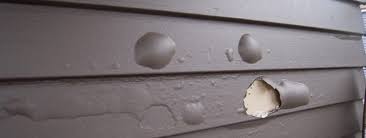Preparing and painting timber weatherboards in hot Australian weather requires some careful planning and execution to ensure the best results. Here’s a step-by-step guide on how to prepare, paint, and maintain your weatherboard house:
1. Cleaning and Preparation:
Start by cleaning the weatherboards thoroughly using a mild detergent and water. Remove any dirt, debris, or loose paint using a stiff brush or pressure washer.
If there are any signs of mold or mildew, treat the affected areas with a suitable fungicidal solution and allow it to dry completely.
Inspect the weatherboards for any signs of rot or damage. Replace or repair any damaged sections before proceeding.
2. Sanding and Smoothing:
Use sandpaper or a power sander to smooth the surface of the weatherboards. This step helps remove any rough spots, old paint, or imperfections.
Pay extra attention to the edges and corners of the weatherboards to ensure a smooth finish.
After sanding, wipe away the dust using a clean cloth or brush.
3. Priming:
Applying a primer is crucial, as it helps improve paint adhesion and extends the life of the paint job.
Choose a high-quality exterior primer suitable for timber surfaces. Opt for an oil-based or acrylic primer designed for outdoor use in hot and humid conditions.
Follow the manufacturer’s instructions regarding application and drying times.
We use an oil based timber primer for all bare timber.
4. Choosing the Paint:
Selecting the right paint is essential for long-lasting results in hot Australian weather.
Look for a high-quality exterior paint specifically designed for timber surfaces. Opt for paints with UV resistance, as they provide better protection against sun damage.
Consider using a paint with a light colour to reflect heat and reduce the risk of excessive heat absorption.
We use Wattyl Solagard and Haymes Solashield on most projects. I always opt for a satin finish as it has a nice sheen and lasts longer in the hot Australian summer. Gloss can last even longer due to its gloss retention.
5. Painting:
Start by stirring the paint thoroughly before application.
Use a high-quality brush or roller designed for exterior painting.
Apply the paint evenly, following the natural grain of the timber, and avoid excessive build-up or drips.
Allow the first coat to dry completely as per the manufacturer’s instructions.
Apply a second coat for better coverage and durability. Follow the drying times specified on the paint can.
6. Maintenance:
Regularly inspect the weatherboards for any signs of wear, peeling, or damage.
Touch up any areas with peeling or chipped paint promptly to prevent water or sun damage to the underlying timber.
Consider repainting your weatherboards every 5-10 years, depending on the condition of the paint and the exposure to the elements.
Keep the surrounding landscaping well-maintained to prevent vegetation from coming into direct contact with the weatherboards, which can lead to moisture retention and potential damage.




